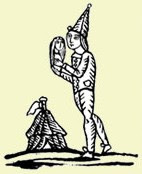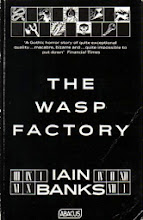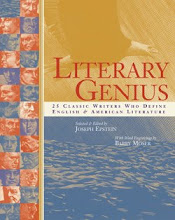
I am aware that this book has been around for a while. I fell upon it in an Oxfam bookshop after hearing quite a bit about it previously, as well as seeing the film. The well known painting by Vermeer on the cover ensures that the book attracts attention. Such is the quality that many people find in Vermeers work, especially with this one. Very little is known about Vermeer or the background to the painted girl, so Tracy Chevalier has shaped a story around a picture that has already prompted wonder and speculation.
The story is told by the girl herself, named Griet. Set in 17th century Delft in the Netherlands, Griet is sent to work as a maid in the Vermeer household in 'Papist Corner'. Her family has fallen on hard times after her father, a talented craftsman tile maker, is blinded after a kiln explodes. Griet is 16 years old and has an artistic eye and a shrewd mind, which she mostly hides, except to us. We are transported into a maids life of washing, cooking and cleaning in a large household of the artist and his large family. We also take part in the dynamics of the house as Griet intergrates with a family of mixed characters. Her status in the house changes when Vermeer favours Griet to help him with his paintings (something no one else is allowed to do). This causes resentment and suspicion but also some grudgingly felt respect. However, when Griet is asked to pose for a new painting at the behest of Vermeers leering patron, everything will change and there is no going back. There are also many layers and sub plots interwoven with the main story, about Griets reluctant relationship with a local butchers son and also the on going fates of her family members.
This book is very easy to read and slides along with an effortless smoothness. I was quickly engrossed in Griets world, fascinated by the descriptions of Delft in the 1600's, but mostly I really liked her. I liked reading her thoughts, her way of describing her position in life, her comfortable understanding and self-respect, but also her ability to learn. I found her accounts of doing the laundry as interesting as her enthusiasm over Vermeers paintings. She has great depth and people around her are drawn to her even if this means they dislike her. She invites opinion, just as the painting does.
Griets relationship with Vermeer forms the heart of the novel, it is where its warmth comes from. She loves his work because she understands it, and therefore his needs and obsessions. His wife does not. The growing attraction and sexual tension is outwardly restrained but inwardly palpable. Griet knows her position, and so does Vermeer. As we know the troubled heart within her, we suspect it in him also, but it is Griet who is stronger and willing to sacrifice, knowing the possible consequences. Although he does come through for her in the end, he is also weaker and more selfish in the short term. There is no tawdry affair, no affair at all. But it is tangible all the same. The result is an enigmatic painting that implies far more than it says. We can read into it what we will.
There are many other layers and characters that I haven't even touched upon, the savvy Maria Thins who is entertained by the ruckus Griet is causing in the household, the scheming daughter, Cornelia, who plots Griets downfall, the faithful and persistant Pieter who fights to win Griets heart. All of this whirling around a maid who likes to keep herself to herself. It is not a large book but there is something new happening, some new direction of plot or sub plot on each page. The conclusion seemed a little sudden but rounded all the streams of plot lines off. Within the factual dates of Vermeers life line, and within the boundaries of realism, there was never going to be a sunset ending, but Griet deserves a decent chance, and I found the ending provided something for her to look back on, but also to move forward from too.
I really loved reading this book, the gentle descriptions, the domestic life in a large house. I enjoyed getting to know a girl whose face I already knew of, and learning her (fictional) story. Without wanting to sound too cliched, this is a story told with a warmth of words that parallel the warmth of feeling that you can get from looking at a Vermeer painting. It is not my favourite book but I would definately recommend it as a good read.
Tracy Chevalier has her own website which talks about her book, offers a reading guide and shows you the paintings by Vermeer that are mentioned in the novel...


























